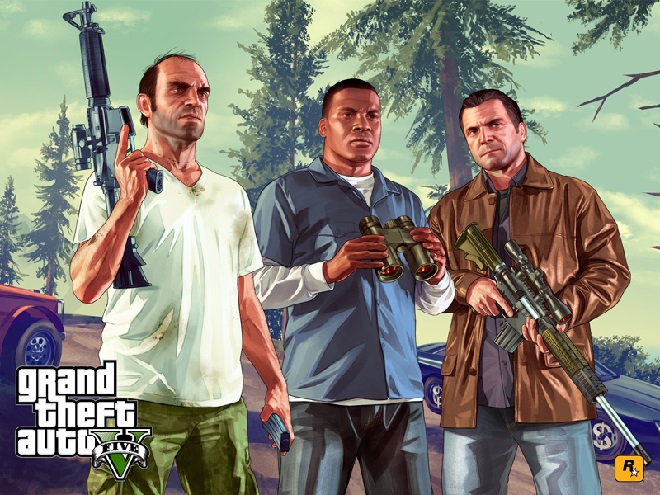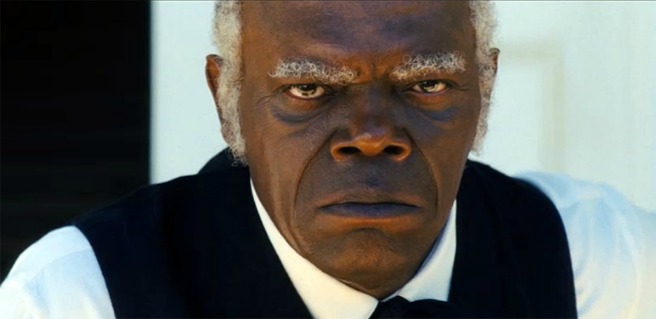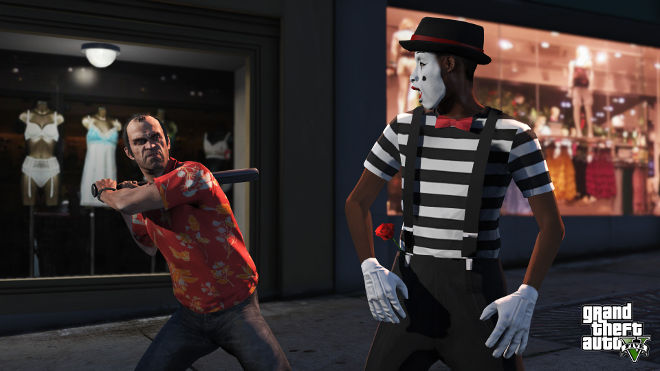Australia’s Still Classifying Movies And Video Games All Wrong. Here’s How We Fix It.
Grand Theft Auto V is only R18+ for 'drugs', according to our outdated classification system. What's going on?
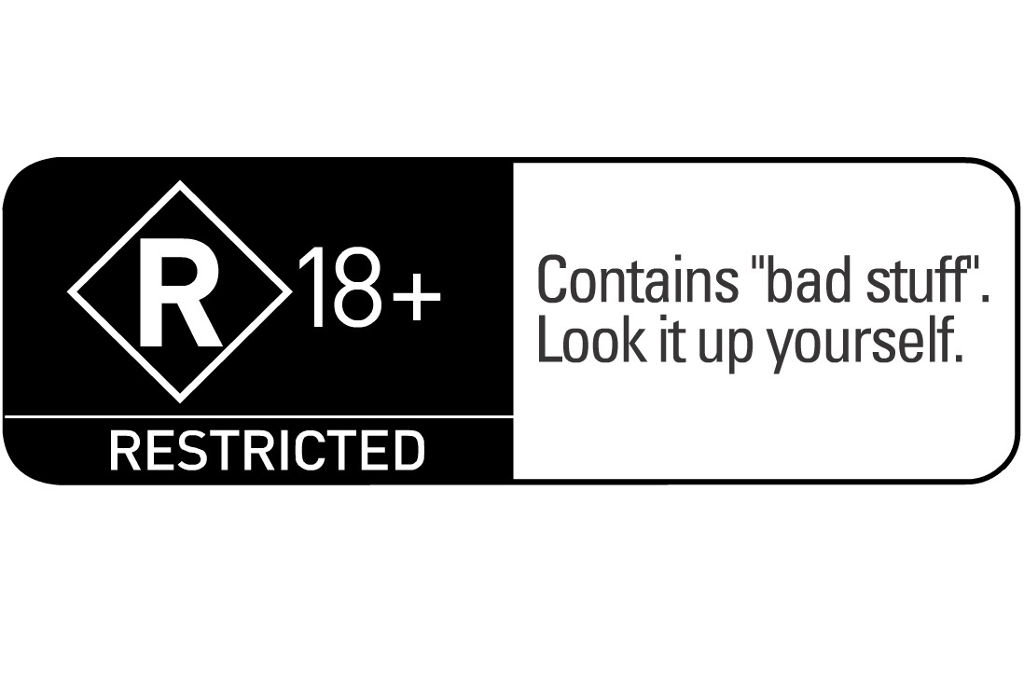
Did a flawed video games classification system ruin some parents’ Christmas?
I was left pondering this question after the pandemonium of Christmas shopping subsided into the “retail dead-zone” of January. As a video game seller and gaming enthusiast one of the most common questions I was asked by parent shoppers this holiday season, aside from requests for discounts, was: “My child wants Grand Theft Auto V for Christmas, and I see it’s R18+, but how bad is it really?”
This type of question is often asked in regards to many different games. In the Grand Theft Auto V scenario the obvious answer is it’s ‘bad’ enough to warrant an R18+ rating. But for some people the age restriction wasn’t enough information and this led me to discover a problem: that despite the 10 plus years of campaigning for an adults-only rating for video games, our classification system is still flawed.
–
“This Game Is Rated R18+ Because Reasons”
The parents who ask me about a game’s rating are doing what every parent should do when it comes to classifications, which is to use them as a guide to weigh up the content of the product against their own personal morals and their child’s maturity. The rating’s purpose is to inform a consumer of the product’s content so they can make an informed decision as to its suitability for themselves or another person.
The rating information on Grand Theft Auto V’s packaging does not fulfil that purpose, and it is an example of one of the ways that the classification system is still not doing its job despite the implementation of the R18+ rating two years ago.
Grand Theft Auto V already had a controversial Christmas period after Target and Kmart decided to pull the game from their shelves following a petition to do so. The situation reignited the embers of the ongoing debate surrounding depictions of violence, discrimination and sex in video games.
Upon its original release in 2013 for Playstation 3 and Xbox 360, Grand Theft Auto V was classified as R18+ with the consumer advice “drug use” displayed on the packaging. Now, anyone who plays video games would know that the Grand Theft Auto series contains much more than drug use. It is rife with violence, coarse language and of course the titular act of stealing cars. But anyone who doesn’t play video games (say a parent looking for a Christmas present to buy their child) might not know this.
Compared to its predecessors, Grand Theft Auto V stepped it up a notch when it came to its graphic content; players torture an alleged terrorist, engage in explicit lap-dances, and hear Django Unchained amounts of racial slurs.
If the game contains all of this (and more), then why does the consumer advice only say “drug use”? This is where the system falls short. And not just for Grand Theft Auto V and R18+ games, but across all classification levels.
–
A Broken System: The Weird Loophole In Our Classification Standards
Games classification is determined by the Australian Classification Board which assigns levels of impact – very mild, mild, moderate, strong and high – to as many as six classifiable elements within a product. These elements are: violence, language, themes, drug use, nudity and sex. Of these elements, the one(s) given the highest impact dictates the classification and only that element(s) is printed in the consumer advice.
In the case of Grand Theft Auto V the game received “strong impact” levels in all categories except for drug use, which was deemed “high impact”. So the game was classified R18+ for drug use. The consumer information therefore failed to mention any of the other five elements despite their strong impact rating.
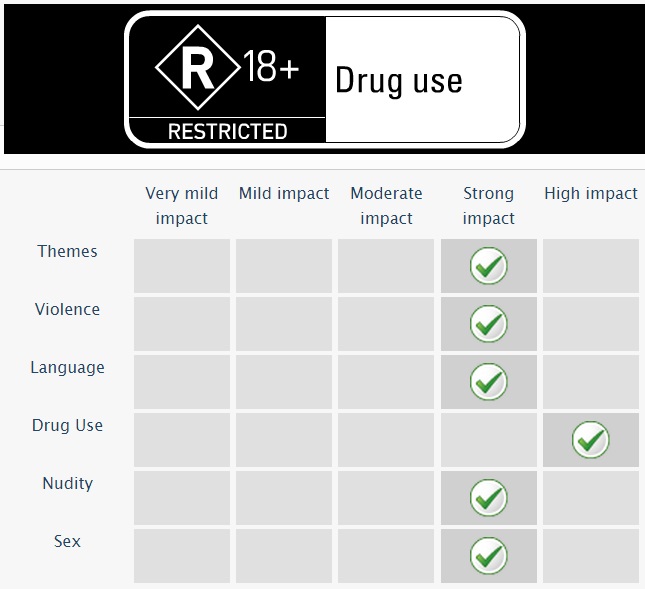
I approached the Attorney-General’s Department about this, as they are responsible for the legislative details surrounding classification and consumer advice labelling. Aside from listing all the Acts that state the guidelines for classifying content, what I got from a spokesperson was this:
“In general, consumer advice reflects the principal element(s) which have contributed to the classification decision and indicates their intensity and/or frequency. Therefore, not all of the classifiable content in a product will be included in consumer advice.”
This means the Classification Board believes Grand Theft Auto V’s depictions of drugs, which primarily comprises of infrequently smoking marijuana, participating in drug deals and occasionally being drugged by others, is the “principal element” anyone purchasing it will want to consider, and not the strong impact of the game’s violence, sex or language.
How is this advising the consumer as to the content of the game? What if the consumer’s priorities don’t match those of the Board? Someone may not be offended by digital characters smoking weed, but could be by explicit violence.
Remember, this isn’t just about parents deciding what to let their kids play but also for adults to decide what to play themselves. And in cases such as Grand Theft Auto V, the classification and the consumer advice are not doing their jobs.
Why can’t the consumer advice contain all the relevant elements to the classification, regardless of impact level? They used to. Go back 15 years to when the film Alien was classified on VHS and it was classified M with “medium level violence, low level coarse language” in the consumer advice. Why can’t Grand Theft Auto V display: “R18+, high impact drug use, strong impact violence, nudity, sex, language and themes”?
The Attorney-General’s Department spokesperson said the consumer advice was never intended to be an “exhaustive list of all classifiable content in a product” and instead more details are included on their website for any particular classification decision. That’s all well and good, but this is not mentioned anywhere on the packaging for Grand Theft Auto V nor in the included instruction manual, so from a consumer’s in-store perspective there is no guidance to that information. Again, the system is not doing its job.
–
It’s Broke, So Fix It: How To Give People What They Need
The National Classification Code 2005, which the Board must adhere to, begins with the following principles:
“Classification decisions are to give effect, as far as possible, to the following principles:
(a) adults should be able to read, hear and see what they want;
(b) minors should be protected from material likely to harm or disturb them;
(c) everyone should be protected from exposure to unsolicited material that they find offensive…”
The current practice with consumer advice about classifications makes it very difficult to properly implement these principles. How can we protect minors if adults can’t access sufficient information to understand the nature of the content? And how can consumers be protected from unwelcome exposure if the classification information is deficient?
Wouldn’t it be better to use the R18+ rating to accurately advise consumers as to the strong and the high impact content of a product, rather than banning it or just not mentioning the content on the packaging? That way parents are informed that the product is not for children and also allows adults to purchase and consume it if they want. And the issue needs to be addressed similarly across the lower classifications.
Clearly there is room for improvement in the Australian classification system. Hopefully it won’t take another ten years of campaigning.
–
Tom Heath is a Melbourne based journalist, film critic at Now Showing with Tom, not-so-safe-for-radio podcaster at Unnatural Selection and a huge gaming enthusiast. He also, occasionally, shares some of those things in his tweets (@tomdheath).
